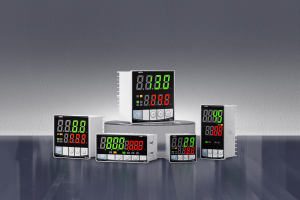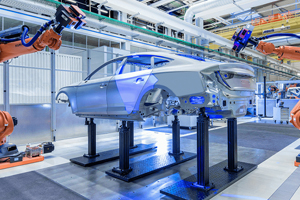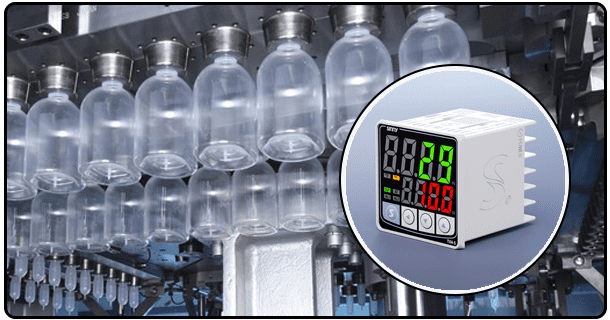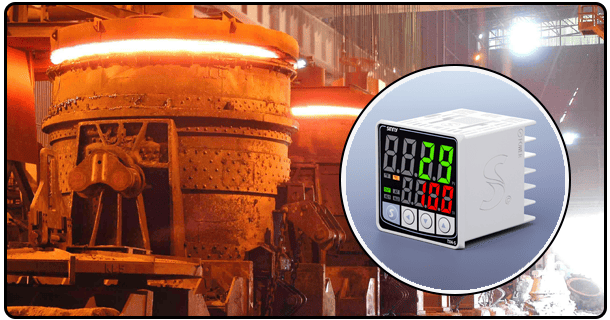An in-depth analysis of the PID temperature controller
Learn about the components and applications of PID Temperature Controllers. Understanding their benefits, challenges and importance in precisely controlling industrial and laboratory temperatures. PID technology explained by experts.
1. The following is a brief introduction to the topic:
Among the most sophisticated and widely employed methods for achieving this precision is the Proportional-Integral-Derivative (PID) temperature control system. The PID controller is examined in detail. The article begins with a discussion of the basic principles that underlie PID controls. Then, the system's essential elements are described. This is followed by a description of the operational workflow, which highlights how dynamically these components interrelate. The diverse uses of PID controllers in various industries are also explored. This technology's inherent benefits are compared with its potential limitations and challenges. Case studies from real-life situations are used to demonstrate practical applications. The article concludes by examining emerging trends in PID technology and its future direction. The detailed analysis aims at providing readers with an in-depth understanding of the critical PID temperature control mechanism.
2. What is PID controller?
A PID controller is a powerful and flexible feedback loop. The PID controller is designed primarily to control a variable in a system, like temperature, flow, pressure or other variables, by changing an input. PID is elegant because it uses three different control actions that each address a specific aspect of the error. The three actions, Proportional Integral and Derivative, are integrated sequentially.
Proportional Action P: This component produces an output directly proportional with the magnitude of the current error signal. The difference between the setpoint temperature desired and the temperature actually measured by the sensor is the error signal. The proportional output increases with a greater error. Its primary purpose is to correct the variable in the process and bring it closer to its setpoint. Although relying on only proportional actions can result in steady-state errors, the temperature may not match the setpoint precisely due to delays and load changes.
Integral action (I): The integral component can be used to eliminate the steady-state error. The integral component calculates the sum cumulative of all errors over time. The integral term will increase (or decrease) the output if the error continues, no matter how small. This pushes the process variable closer to the setpoint. The system will eventually reach the set temperature, but it may introduce oscillations or lags if the action is not properly tuned.
Derived Action (D), This derivative component is based on the change rate in the error signal. The output is based on the rate of change in error. The derivative term will produce a corrective action if the error rapidly increases or decreases. It anticipates future deviations, and helps to dampen any potential oscillations. It improves responsiveness and stability, especially in systems that are prone to instability or overshoot.
This combination of three actions allows a PID temperature controller to respond appropriately to the error at hand, to learn from previous errors and to anticipate errors in the future. The result is highly accurate and reliable temperature regulation. It is important to understand this algorithmic basis in order to fully appreciate the capabilities of PID temperature control systems and how they should be implemented.
3. Components in a PID temperature controller
The components of a PID system that works well are distinct but interconnected. They work together to accurately measure temperature, analyze the data, and implement the desired control. Primary components are:
Sensor of Temperature: The sensor is responsible for measuring actual temperatures within the environment or process being monitored. It is important to choose the right sensor for your application. Examples of common types are:
Thermocouples Used widely due to the wide temperature range they cover, their robustness and relative low costs. Thermocouples work by using the voltage created at the intersection of two metals that are dissimilar.
Resistance Temperature Detectors: Provide greater accuracy and stability at lower temperatures than thermocouples. These detectors rely on changes in the electrical resistance of metal (typically platinum) as temperature increases.
Thermistors They are known for their high temperature sensitivity. The sensors have either a positive or negative temperature coefficient.
Control Unit: The controller unit is the brain of the system and performs the PID calculations. Historically this could have been done with dedicated hardware controllers, or even PLCs. Modern PID controllers can be implemented with microcontrollers or general purpose computers that run specialized software. The controller compares the reading of the sensor to the setpoint defined by the user, then calculates proportional integral and derivative terms. It sums these to create an error signal and determines what output command to send.
Actuator An actuator is a device that receives an output command (from the controller) and converts it to a physical act which modifies process temperature. The most common temperature controller actuator is an electrical heating element, such as a resistor strip or heating coil. When energized, it increases temperature. In the opposite direction, cooling mechanisms such as fans, refrigeration cycles, and solenoid controls of coolant flows may be used. The controller output is used to adjust the power of the actuator or the flow rate. This will bring the temperature measured back up towards the setpoint.
Interface User: This component allows interaction between an operator and a control system. The display will show current temperatures, the setpoint temperature, any errors, as well as status indicators. The user can adjust or set the temperature by using buttons, a keyboard, or other input mechanisms. There are some advanced controllers that offer digital communication options (e.g. Modbus or CAN bus), which can be integrated into larger control systems.
This four-component system is a closed loop control. The sensor reads out the output. A controller then processes this information to generate a command. An actuator then executes that command.
4. What is the PID temperature controller?
A PID controller operates in a cycle that is continuous, which is characteristic of feedback systems. The cycle is broken into several sequential steps.
Measurement of Temperature: Actively measures the temperature in the process or medium. The reading will typically be in the form an electrical signal.
Conversion of Signals: Raw sensor signals are often converted to a digital or voltage value that can be processed by the controller. Signal conditioning circuits can be used to linearize sensor output or amplify a weaker signal.
Calculation of Error: When calculating error, the controller compares sensor data to a user-defined temperature setpoint. This difference is what we call the error (Error = Measured Temperature - Setpoint).
Execution of the PID Algorithm: When the controller receives an error signal, it applies the PID algorithms. The controller calculates contributions for the proportional integral and derivative terms using the current error and history of error (for integral term) and rate of change in the error (for derivative term).
Proportional Calculation The output is proportional the error instantaneous.
Integral Calculation Output equals the sum of all past errors integrated in time.
Calculate the derivative: The output is proportional the the rate of error.
Summation of Outputs: All outputs are added together. The controller output is represented by this summated value, which can also be referred to the "sp", or setpoint of the output. This signal represents the level of desired actuator activity.
Control of Actuator: A controller transmits an output signal to the actuator (e.g. a digital voltage or command). Actuator control: The controller sends the output signal (e.g., a digital command or an analog voltage) to the actuator. It is the goal to alter the temperature of a process.
Loop Feedback: After the modified temperature has been measured, the process is re-measured by the sensor and the cycle starts again. The system can react to changes in the environment dynamically by continuously measuring, calculating, and adjusting.
This loop's effectiveness depends on tuning the three PID parameters, the Proportional gain (Kp), Integral gain (Ki), Derivative gain (Kd). The right tuning is crucial for accurate, stable and responsive temperature control, without oscillations or slow responses.
5. PID Temperature Controls: Applications
PID is indispensable for thermal management in many fields due to its precision, flexibility and reliability. The applications of PID temperature control are numerous and varied:
Industrial Processes PID Controllers are widely used in industrial and manufacturing settings. These controllers are essential for:
HVAC Systems: Maintaining a comfortable temperature in large buildings.
Control of Reactors: Optimizing reaction rates in chemical reactors and ensuring safety by precisely controlling the temperature.
Plastic Molding & Extrusion: Ensure materials meet their melting and cooling point for desired product characteristics.
Metal treatment: The temperature of metal-treating processes such as annealing and tempering is strictly controlled to ensure the material's strength and durability.
Drying Operation: Controlling temperature in ovens or dryers to reach a specific moisture content, product quality.
Laboratory equipment: The precise control of temperature is essential for research and development.
Incubators : Keeping temperatures stable for cell cultures or microbiological experiments.
Water Baths and Shakers: Provide consistent temperatures for sample preparation.
Thermal Analyzers Thermal analyzers require precise temperature controls to ensure accurate measurements.
Kettles for Reactions: Controlling the temperature of chemical syntheses in a lab.
Manufacturing Pharmaceuticals: The temperature regulation of drugs is crucial for their efficacy and stability:
Temperature control for bioreactors.
Product Sterilization Heat products to a temperature that kills microorganisms without destroying the product.
Aerospace & Automotive: Maintaining optimal temperature for sensors, electronic components, and other components in high-demand environments.
Home Appliances: Although simpler controllers may be used, the PID principle underpins temperature regulation:
Freezers and Refrigerators: Maintaining Low Temperatures for Food Preservation
Machines for washing clothes: Controlling the water temperature to ensure optimal fabric cleaning.
Dishwashers : Regulation of wash and rinse temperature.
PID controls are versatile because they can be tailored to meet a variety of temperatures requirements. From cryogenics to high industrial temperatures. They have become a key technology for thermal regulation in a multitude of applications.
6. The advantages of using a PID temperature controller
Comparing PID systems to other control methods, there are several benefits of using a PID system.
High Accuracy PID Controllers are known for the ability to maintain the process variable very close to the setpoint. It is important for applications in which small changes in temperature can have a significant impact on product safety or quality.
Reliability and Stability: PID systems, when tuned properly, can operate reliably even under disturbances. These systems can suppress the oscillations caused by simpler control methods.
Response: The PID controllers are responsive to any changes to the temperature setpoint, or to disturbances. This helps to reduce the time required to achieve the target temperature.
Flexibility: Parameters of PID controllers (Kp, KI, Kd), can be easily adjusted for optimal performance under different conditions. The system can be tuned to achieve maximum accuracy and efficiency.
Energy Efficient: Maintaining the temperature close to the setpoint, without overshooting the target or excessive cycling can result in a more efficient heating or cooling method compared with less sophisticated methods.
PID controllers are the best choice when it comes to applications that require high accuracy and stability in temperature regulation.
7. The Challenges of Limitations
Although PID controllers offer many benefits, they are not free of challenges or limitations.
Tuning complexity: To achieve optimal performance, it is often necessary to carefully and at times complexly tune the PID parameter (Kp Ki Kd). A poor tuning may lead to unstable (oscillations), long response times or constant steady state errors. Although there are many tuning methods (e.g. Ziegler Nichols), it can be difficult to implement, particularly for processes that are non-linear and poorly understood.
Requirements for Models: The PID Control relies upon a linear process model, at least local to the point of operation. If the linear assumption no longer holds true, PID's performance will be significantly reduced for highly nonlinear processes. It may be necessary to use advanced techniques such as cascade or adaptive controls.
Accuracy of Sensors and Drift: In the end, the accuracy of a temperature controller will be limited by its temperature sensor's accuracy and stability. If the sensor drifts over time, it can cause control errors if calibrated regularly.
Limitations of Actuators: Physical limitations (e.g. maximum output power of a heat source, maximum flow of coolant) may limit the control performance.
Non-Linearities and Measurement Noise: Measurement noise, and non-linear effects can interfere with smooth and accurate controls.
Cost: Investing in a PID system with sophisticated features, or one that is integrated into complex machines, may require a larger initial investment than simpler strategies.
It is crucial to understand these issues for the design, implementation and maintenance of PID systems.
8. Case Studies
Consider the following examples to illustrate how PID temperature controls can be used in practice:
Case Study 1: Industrial Furnace Temperature Control
Scenario 1: A metal component manufacturer makes components which require hardening at specific temperatures, then controlled cooling.
The challenge: To achieve the mechanical properties desired, it is essential to maintain a constant temperature within the furnace. The temperature can be affected by the loads entering the furnace.
Solution: The power to heat the elements of the furnace is controlled by a PID controller. Temperature sensor feedback is provided by a thermocouple (likely high temperature). The controller adjusts Kp, Kd, and Ki parameters in order to maintain the exact temperature profile and compensate for changes in load. This ensures consistent quality of products and minimizes energy waste.
In comparison to the older methods of on/off control, PID achieves temperature stability and reduces rejection rates. It also optimizes energy usage.
Case study 2: Laboratory Incubator For Cell Culture
Scenario A biomedical lab must cultivate cells in an incubator at 37degC+-0.1degC.
Challenge: This level of precision and reproducibility is crucial for the viability of cells. Even small fluctuations in cell growth rate and experiment results can have a significant impact.
Solution: The PID controller controls the temperature and cooling of the incubator. RTD sensors provide highly accurate measurements of temperature. It is carefully tuned so that it can respond to deviations quickly while also preventing oscillations near the setpoint of 37degC.
Outcomes: The PID provides an environment that is highly reproducible and stable, which is crucial to reliable biological experiments.
Case Study 3: Refrigerator Temperature Management
Scenario A modern fridge aims to keep its compartment for fresh foods at a constant temperature of 4degC plus or minus 1degC.
Challenge: A refrigerator needs to respond rapidly when the door is opened (heat enters) or ambient temperature changes, while also avoiding overcooling and frost accumulation.
Solution: Although the principles of adaptive control are often simplified, they have PID characteristics. The controller changes the duration of the compressor cycle (actuator), based on temperature errors (measured with a thermosensor sensor), and anticipates logic in order to efficiently manage load variations.
Outcomes: This system is able to maintain the desired temperature, while reducing energy usage and providing a constant environment for food storage.
The examples below demonstrate how PID control is critical in maintaining temperatures stability for a wide range of applications.
9. Future Innovations and Trends
Temperature control is a field that continues to develop, with the advancement of technology and increased demands for precision and efficiency. PID temperature control is shaped by several trends and innovations:
Smart Controllers for PIDs: PIDs can be made "smart devices" by integrating digital communication protocols, such as Modbus or Ethernet/IP. It allows remote configuration, diagnosis, and integration with larger Distributed Control Systems or Supervisory Control & Data Acquisition (SCADA).
Integration of IoT: By connecting PID controllers with the IoT, data analytics, cloud-based monitoring and predictive maintenance alerts are possible. It allows for better energy management and gives valuable data to optimize processes.
Sensor Technologies of the Future: The development of temperature sensors that are more durable, accurate and faster is in progress, as well as wireless versions. The improved sensor accuracy allows for less complex tuning, and improves control performance.
Machine learning and adaptive control: Research explores the use of machine-learning algorithms to optimize PID tuning and adapt parameters to process dynamics in real time. It also predicts potential problems before they happen. It could be a step beyond the traditional PID tune-up to more intelligent control strategy.
Energy Harvesting In certain situations, such as in mobile or remote settings, it is possible to power PID systems with low-power sensors and communication modules using energy harvesting technology.
User Interfaces Improved: The use of intuitive software and touchscreen interfaces is becoming more common, allowing operators to manage complex systems and PID tuning.
The PID temperature control principle is the basis for these trends, which are aimed at achieving more efficient, intelligent and interconnected systems.
10. The conclusion of the article is:
In conclusion, the Proportional-Integral-Derivative (PID) temperature controller represents a highly effective and widely adopted technology for achieving precise and stable temperature regulation. The PID temperature controller's basic principle is based on an integration of proportional integral and derivative controls. This allows the device to respond effectively to a wide range of situations.
- implementation, and testing of the PID Temperature Controller Project
- PID Controller Temperature Sensor























